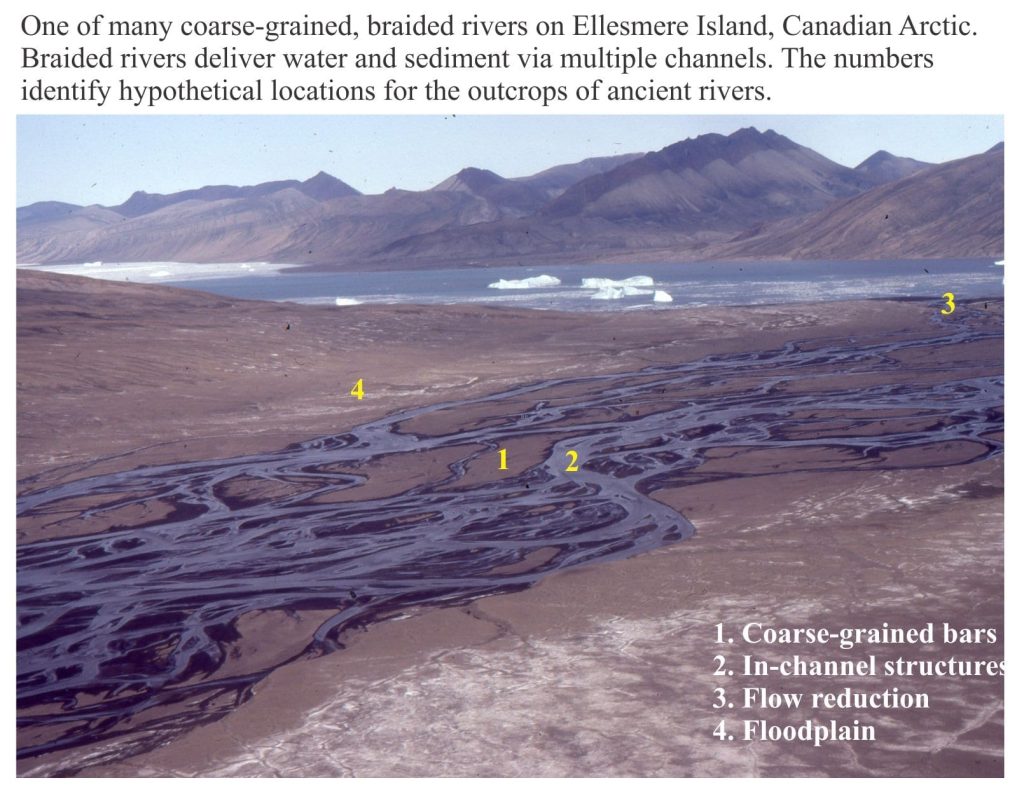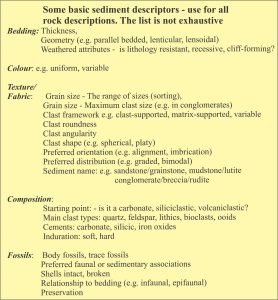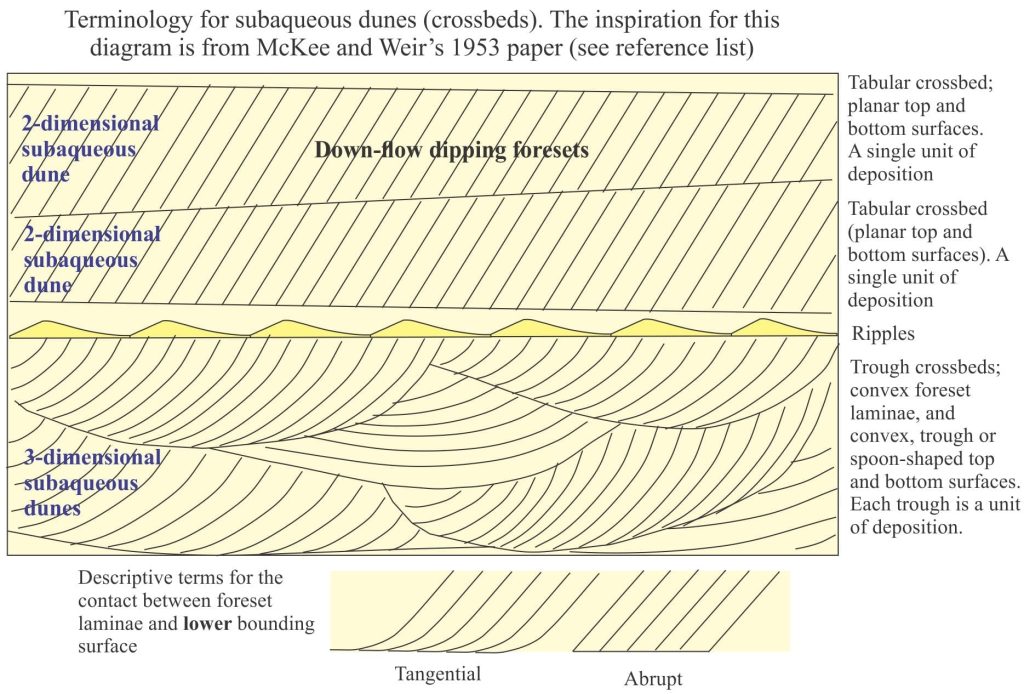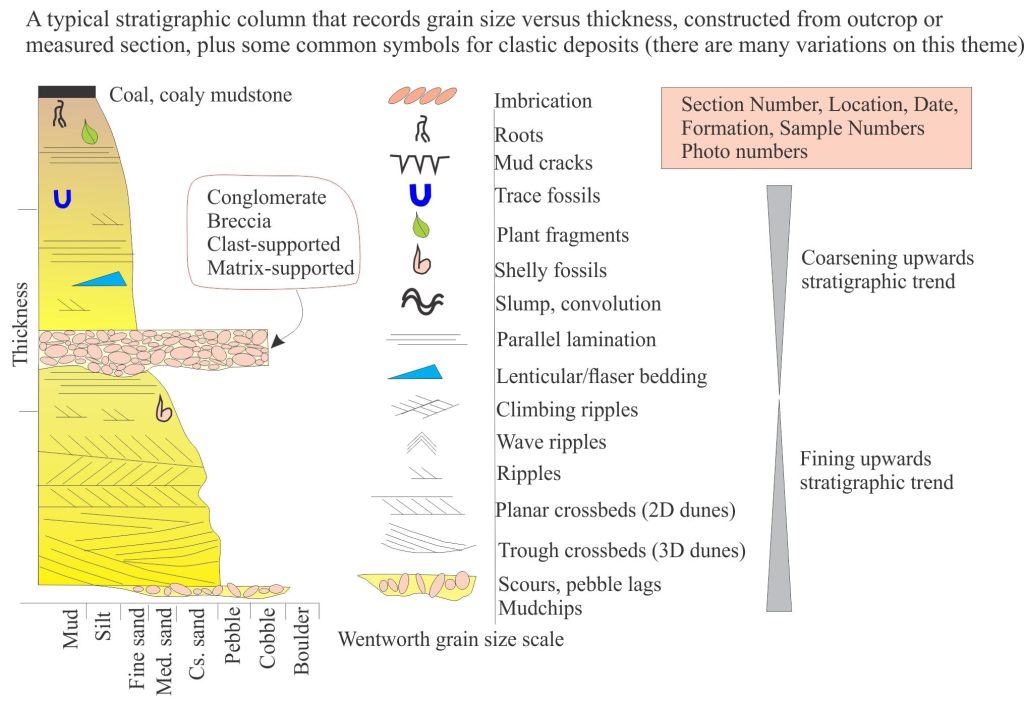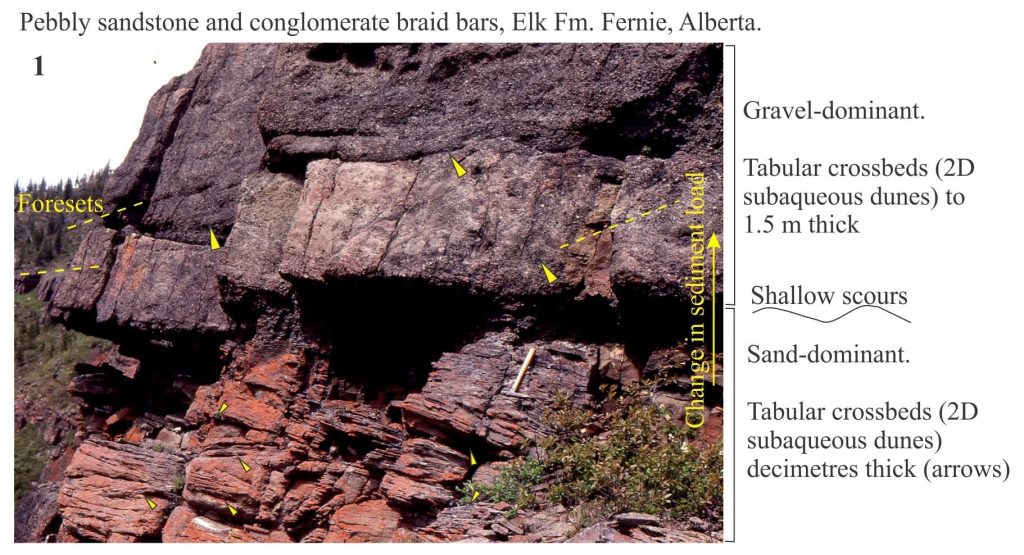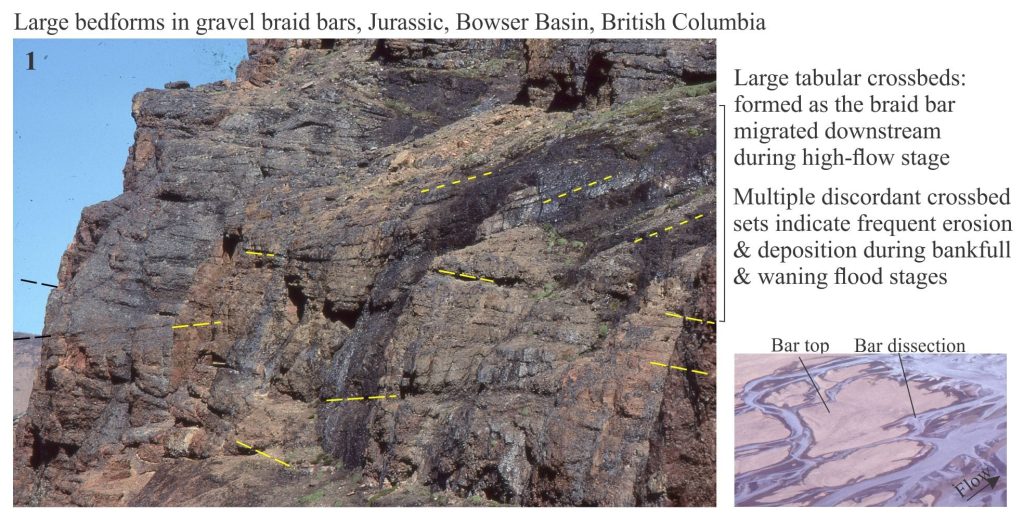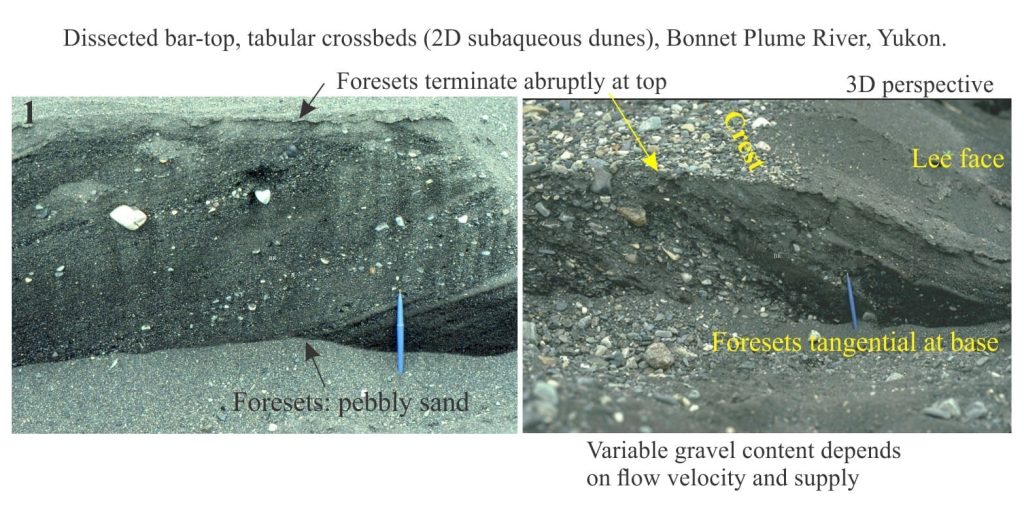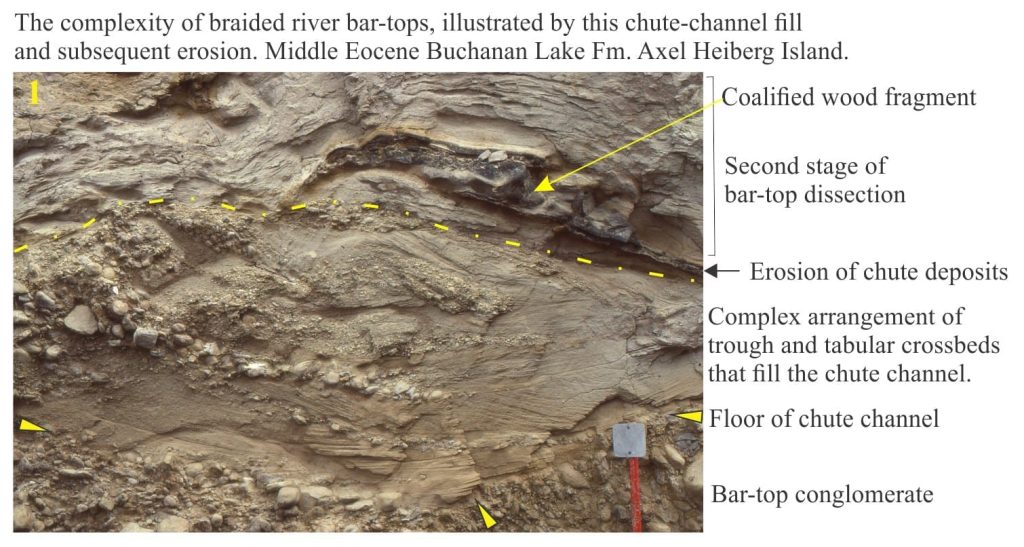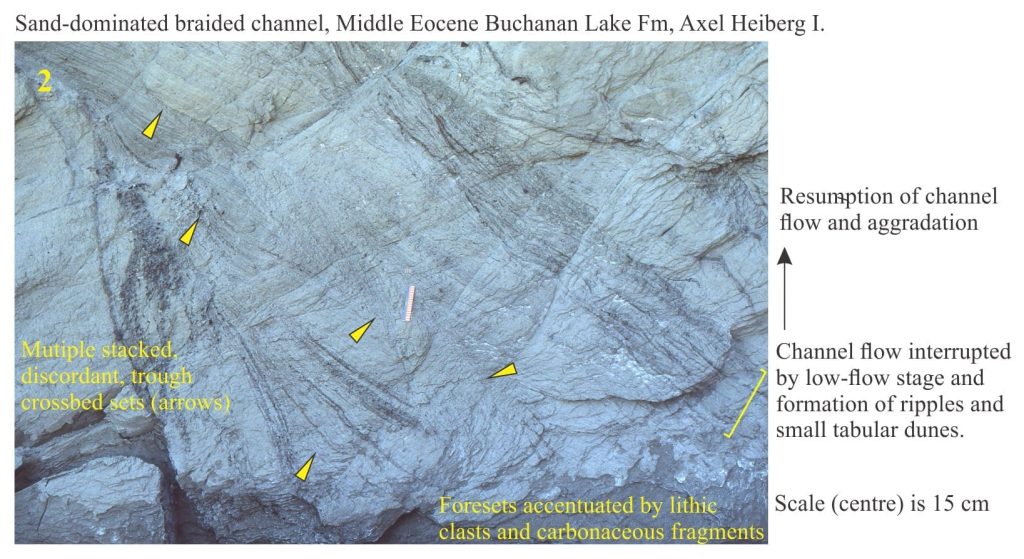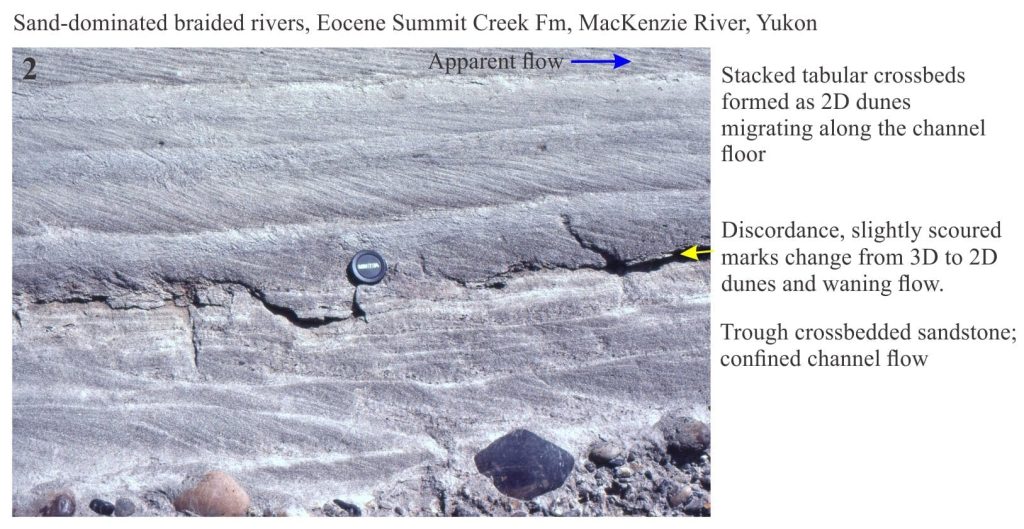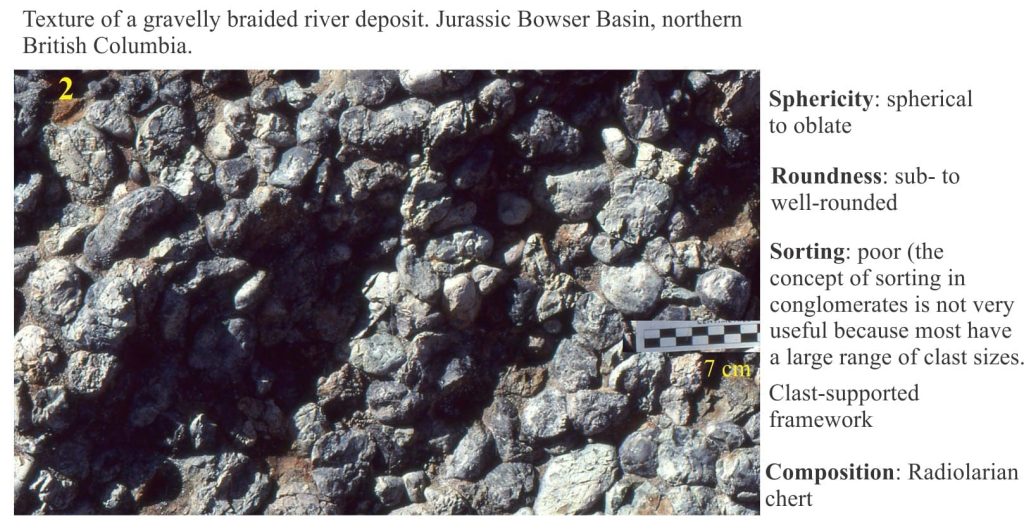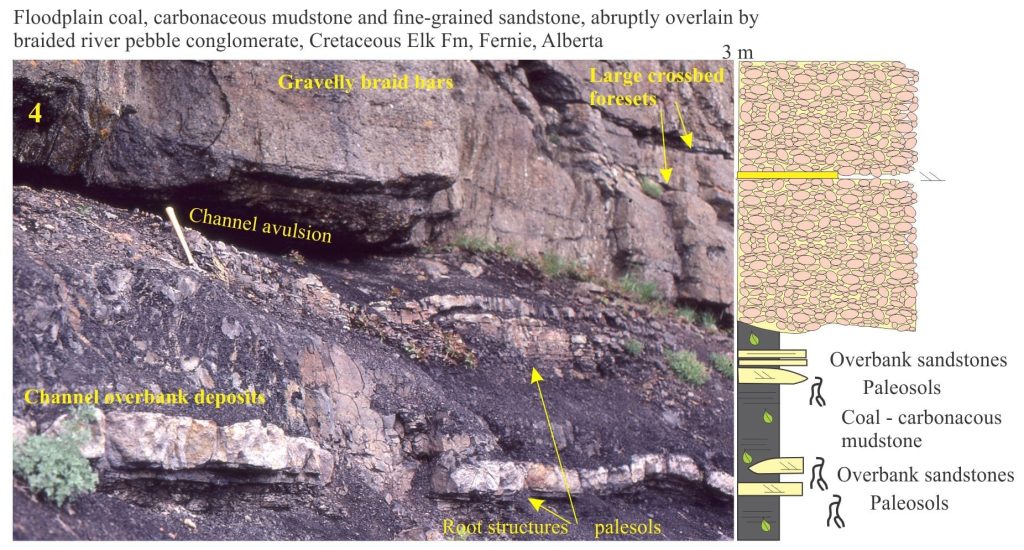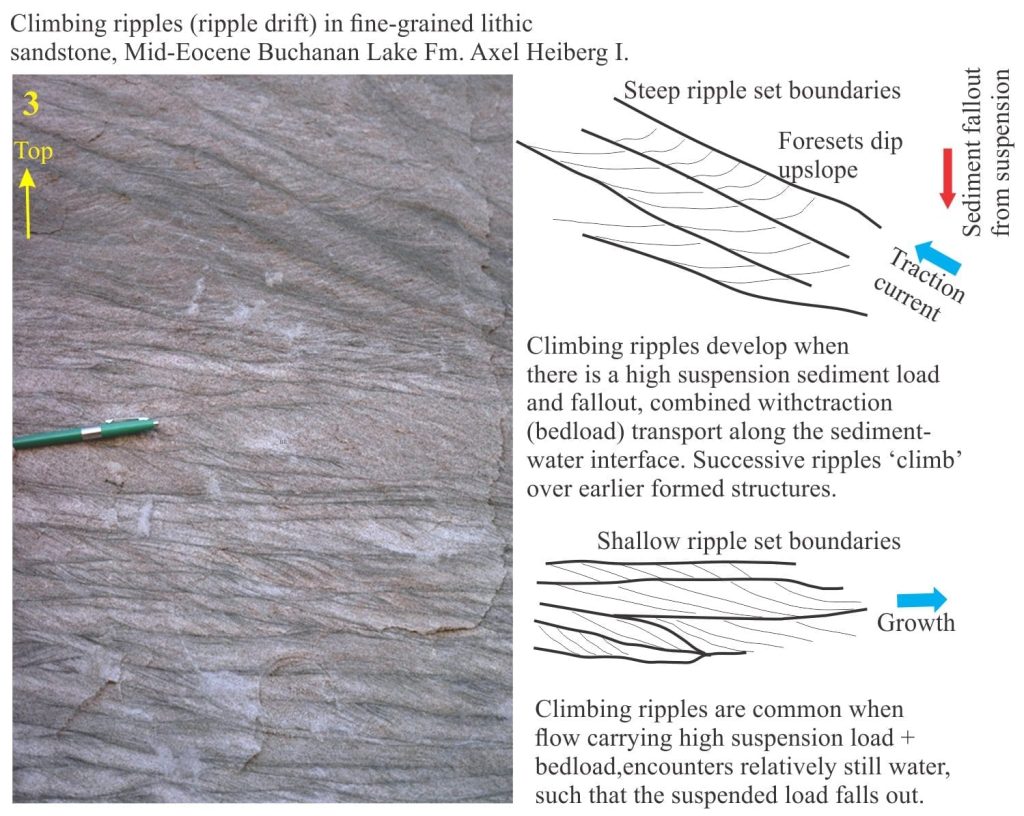A look at coarse-grained, braided rivers in outcrop
This is part of the How To…series on describing sedimentary rocks – in this post describing and interpreting coarse-grained fluvial (braided river) deposits in outcrop.
The images shown here illustrate some of the outcrop features associated with coarse-grained fluvial deposits; In most cases they relate to ancient low sinuosity, braided channel systems and floodplains. Alluvial fans also share some of the characteristics of braided rivers – many fans contain braided rivers. However, I have focused here on rivers sensu stricto.
The images are divided into 4 categories, shown on the Arctic scene at the top of the page. They represent four different depositional elements of this braided river, although there is some overlap of process and deposit.
Related links in this series on outcrop description
Sedimentary structures: Alluvial fans
Sedimentary structures: fine-grained fluvial
Sedimentary structures: Mass Transport Deposits
Sedimentary structures: Turbidites
Sedimentary structures: Shallow marine
Sedimentary structures: Stromatolites
Volcanics in outcrop: Lava flows
Volcanics in outcrop: Secondary volcaniclastics
Volcanics in outcrop: Pyroclastic fall deposits
Other useful links
Sediment transport: Bedload and suspension load
The hydraulics of sedimentation: Flow regime
Fluid flow: Froude and Reynolds numbers
Describing sedimentary rocks; some basics
Measuring a stratigraphic section
Grain size of clastic rocks and sediments
Some controls on grain size distributions
The first three diagrams show some basic sediment descriptors and terminology, and a typical stratigraphic column drawn from outcrop data. These are your starting points for describing and interpreting sedimentary rocks and sedimentary structures in outcrop, hand specimen, and core.
References
The publications cited below apply to the spectrum of fluvial deposits, including meandering river systems (previous post). The literature on fluvial systems and their deposits is vast (actually, this also applies to most other sedimentological domains); the accumulation of two centuries of knowledge and excellent science. The 1970s and 80s were heydays for facies models based on modern-ancient analogues; many of these papers are cited in the references here.
J.S. Bridge, 2006. Fluvial facies models: Recent developments. In: Posamentier H W, Walker R G. (Eds.), Facies models revised. SEPM Special Publication 84, 2006: 85–170. This is a revision of the iconic volume Facies Models, originally published by the Geological Association of Canada (Geoscience Canada) (1976-79). Currently Open Access
S.K. Davidson, S.Leleu, and C.P. North (Eds.). 2011. From River to Rock Record: The preservation of fluvial sediments and their subsequent interpretation. SEPM Special Publication 97. 21 papers on many aspects of fluvial sedimentology.
A.D. Miall, 1977. A review of the braided-river depositional environment. Earth Science Reviews, v. 13, p. 1-62. An older but excellent summary of processes and models
A.D. Miall, 2006. The Geology of Fluvial Deposits: Sedimentary Facies, Basin Analysis, and Petroleum Geology. Springer.
G.S. Weissmann et al. 2011. Alluvial facies distributions in continental sedimentary basins – distributive fluvial systems. In: Davidson S.K., Leleu S. & North C.P. (eds) From River to Rock Record. SEPM, Special Publications, 97, 327–355. Free access
G.S. Weissmann et al. 2015. Fluvial geomorphic elements in modern sedimentary basins and their potential preservation in the rock record: A review. Geomorphology, v.250, p. 187-219
